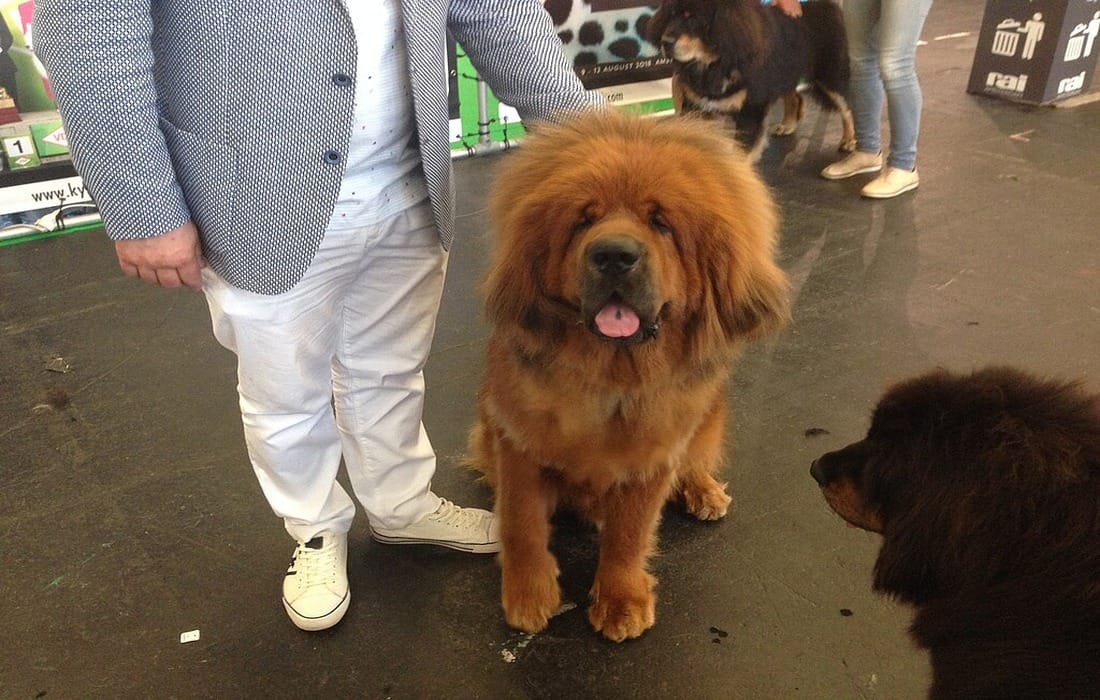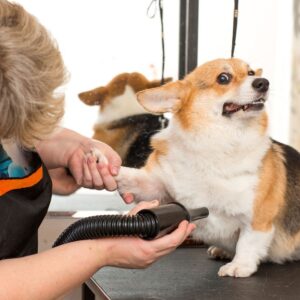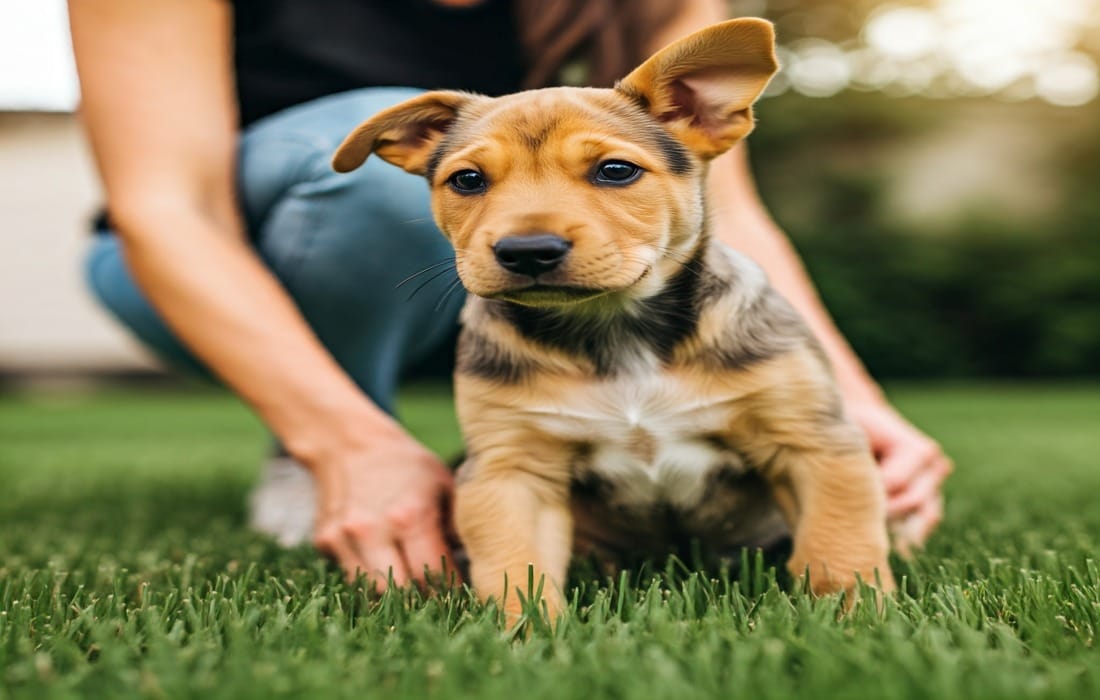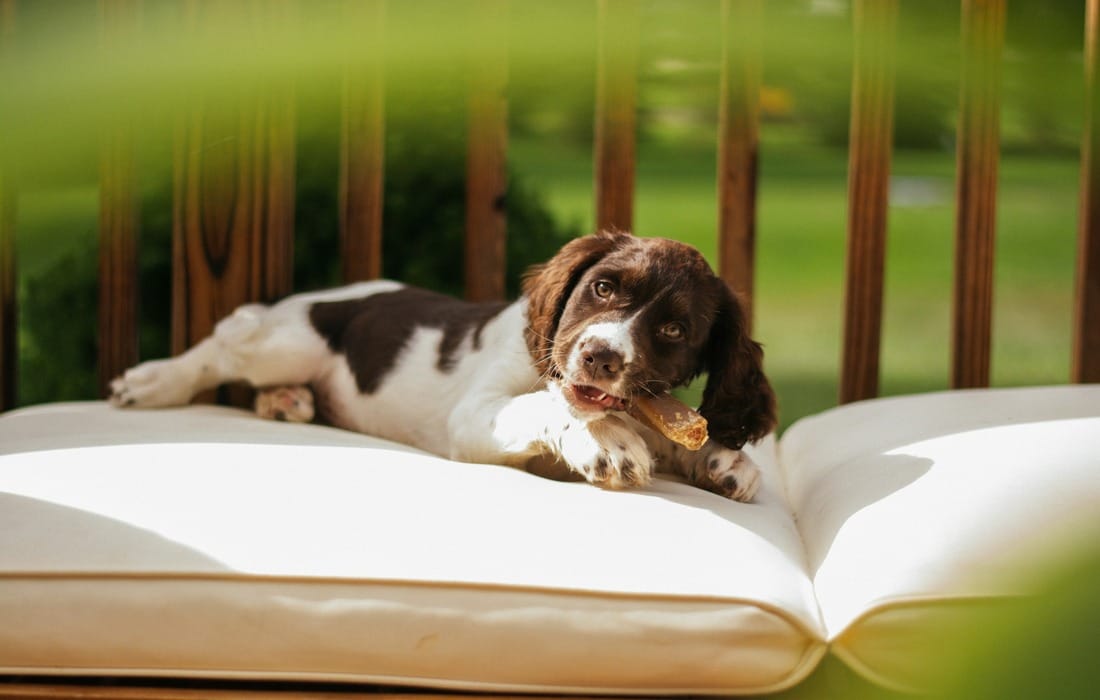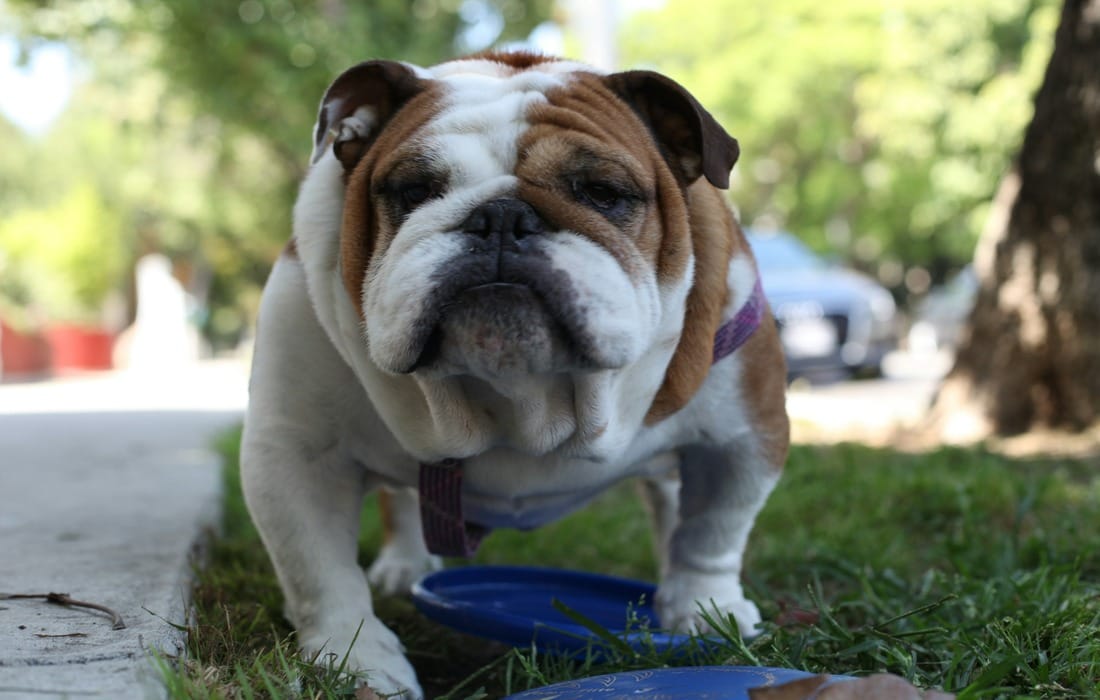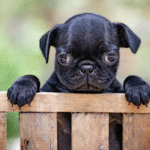If you’re considering a brindle pitbull as your first dog, and looking for information about this amazing breed, you’re in the right place. These energetic and loyal companions are as striking in their appearance as they are in their personality. With their unique tiger-striped coats and affectionate nature, brindle pitbulls are a great choice for many first-time owners. But, like any dog, they come with specific needs and behaviors that you’ll want to understand before bringing one home.
In this guide I’ll share with you everything there is to know about this amazing breed, so you can you feel confident and prepared. From understanding their temperament to knowing what to expect in terms of care and training, you’ll learn what it takes to provide a happy, healthy life for your brindle pitbull. So let’s get started!
What is a Brindle Pitbull?
Brindle pitbulls are a stunning variation of the American Pit Bull Terrier, known for their distinctive tiger-striped coats. They’re loved for their unique appearance and warm, loyal temperament, making them stand out in the world of pitbulls. But what exactly defines a brindle pitbull, and what makes their coats so special? Here’s a breakdown of their most notable traits and the fascinating genetics behind their striking look.
Distinctive Features of Brindle Pitbulls
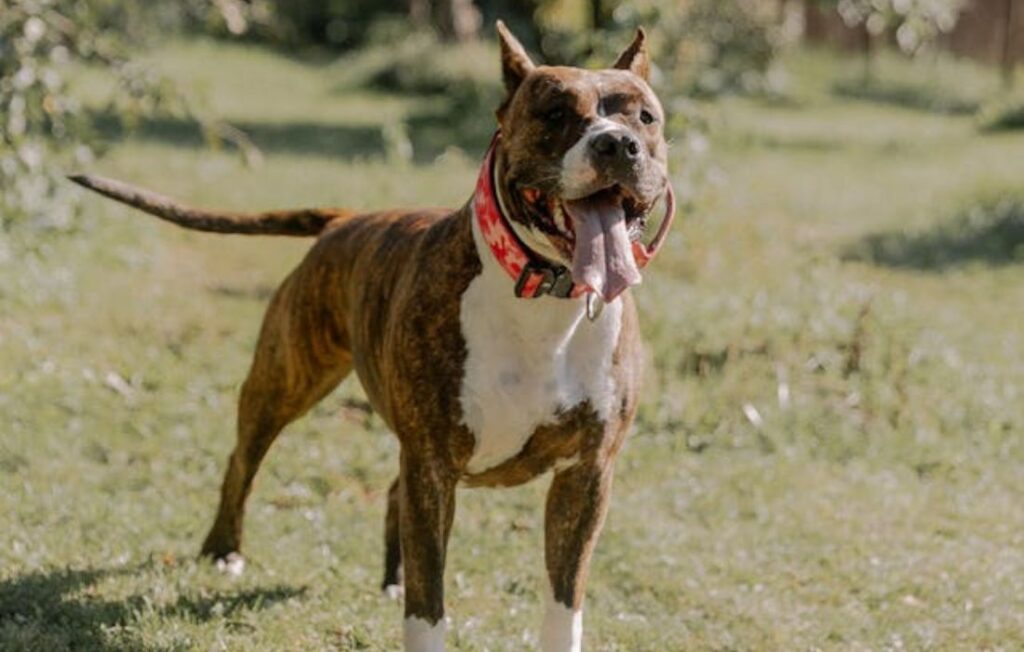

When people talk about brindle pitbulls, the first thing that comes to mind is their eye-catching coat. These dogs carry the same athletic build and blocky head of other pitbulls, but their aesthetic is taken up a notch by the brindle pattern.
Here’s what makes them stand out:
- Size and Build: Brindle pitbulls typically weigh between 30 and 60 pounds and stand about 17 to 21 inches tall at the shoulder. They have a muscular, medium-sized frame that’s strong and agile.
- Coat Markings: The brindle pattern gives their fur a tiger-striped appearance, blending darker stripes with lighter base colors. Common base tones include fawn, blue, and white, while the stripes are often deep brown, black, or even auburn.
- Unique Variations: Not all brindle coats look the same. You might come across “reverse brindle,” where the darker stripes dominate, or “seal brindle,” where their coat develops an iridescent sheen under sunlight.
Brindle Coat Genetics
The brindle pattern in a pitbull’s coat is not just a visual marvel—it’s a result of intricate genetics. This is determined by a specific allele (a version of a gene) that maps to the dog’s K locus, the location responsible for coat patterns.
Here’s the science in everyday language:
- Gene Interaction: A dog must inherit at least one copy of the brindle gene (kbr) from its parents to display this coat pattern. The dominance hierarchy here is key: black (KB) is dominant, brindle (kbr) is second, and yellow (ky) is recessive. For brindle patterns to show, the kbr allele must prevail over the others.
- Parent Genes and Coat Expression: Brindle can only happen when the required gene is present in the parents’ DNA. Even two non-brindle pitbull parents could produce a brindle puppy if they carry the kbr allele hidden in their genetic makeup.
- Variation in Patterns: The intensity and layout of a brindle coat depend on multiple factors, including pigment concentration and gene dominance. This is why some brindle pitbulls appear heavily striped, while others display faint or scattered markings.
Temperament and Personality of a Brindle Pitbull
Brindle pitbulls are known for their endearing personality traits. Whether you’re seeking a loyal sidekick or a playful bundle of energy, this breed offers both in abundance. Here’s a closer look at what makes their temperament so special and tips to nurture it effectively.
Loyal Companions
Brindle pitbulls are some of the most devoted dogs you can welcome into your home. They thrive on building strong bonds with their families and love being part of your daily life. You’ll often find them shadowing you from room to room, whether you’re busy in the kitchen or relaxing on the couch.
Their loyalty isn’t just endearing—it’s steadfast. These dogs will go to great lengths to protect and support their humans. They excel as companions, especially for those who invest time reciprocating their affection. If you’re worried about whether they’re good with kids or strangers, rest assured; when raised in a loving environment and socialized well, brindle pitbulls are known to be warm and gentle even outside their immediate family.
However, keep in mind that much of their behavior stems from their upbringing. Show them kindness and consistency, and they’ll repay you with endless devotion.
Socialization Needs
Brindle pitbulls are naturally energetic, which can be both a blessing and a task. Regular socialization is critical to ensure your pup grows up confident and well-mannered. Without socializing, their enthusiasm can sometimes be misunderstood, especially by strangers or other dogs.
Start introducing your brindle pitbull to new environments, pets, and people from an early age. Here are a few tips to make the process smoother:
- Frequent Walks and Meetups: Take your dog on walks in varying environments, and consider visiting dog parks (with cautious oversight). A secure space for interaction builds confidence.
- Organize Playdates: Controlled meetups with well-behaved dogs can help your pitbull navigate interactions successfully.
- Reward Positive Interaction: Use treats or verbal praise to reinforce calm and friendly behavior during introductions.
Remember, each dog is unique. Some might adapt quickly to new animals or people, while others may require additional time and guidance. Stay patient, firm, and loving through the process.
Training Tips
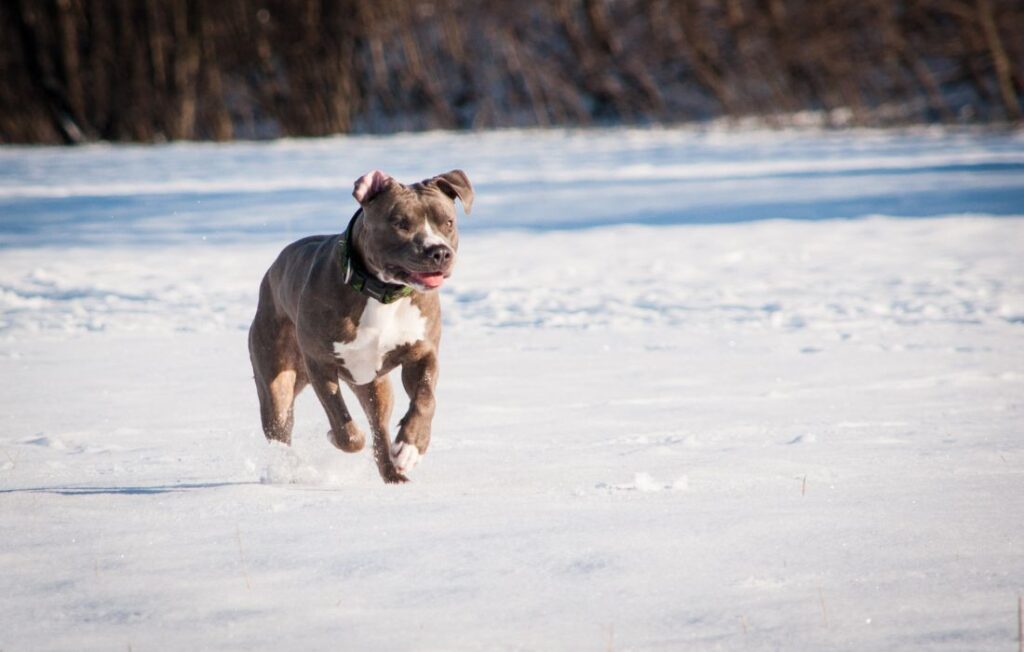

Training a brindle pitbull can set the foundation for a peaceful and cooperative household. Their intelligence and eagerness to please make them a short hop away from being a star pupil, but training needs to align with their temperament.
Here’s how you can succeed:
- Consistency is Key: Daily practice of commands ensures your pitbull stays on track. Whether it’s “sit,” “stay,” or leash training, regular repetition solidifies these skills.
- Positive Reinforcement: Use treats, toys, or affection immediately after a desired action. This strengthens their association between commands and rewards. Studies continue to highlight its effectiveness over punitive methods.
- Short Training Windows: Keep sessions 10–15 minutes long. This keeps your dog engaged without overloading their attention span.
- Seek Professional Obedience Classes: If you’re struggling or want additional structured guidance, don’t hesitate to turn to experts. A trained professional can help with stubborn traits or more complicated behaviors. A helpful starting point can be found in guides like Bully Max’s Pitbull Training Tips.
Training isn’t just about obedience—it also strengthens the bond between you and your brindle companion. By staying calm, patient, and using clear communication, you’re setting your dog up for lifetime success. Remember, a brindle pitbull isn’t just a pet, they’re a family member. By understanding their temperament and giving them the structure they need, you’ll get nothing but years of joy and companionship in return.
Caring for a Brindle Pitbull
When it comes to brindle pitbulls, providing proper care is the foundation for a long, happy, and healthy life. These dogs are loyal and high-energy, but their needs go beyond good companionship. From physical activity to diet and grooming, understanding what keeps them thriving is vital for first-time owners. Here’s a detailed look at how to care for your brindle pitbull.
Exercise Requirements
Brindle pitbulls are energetic dogs and need daily exercise to maintain their physical and mental health. A bored pitbull can become restless or even destructive, so keeping them active should be a top priority.
- Daily Exercise: Aim for 1 to 2 hours of physical activity every day. This can include a mix of walks, runs, and interactive games like fetch or tug-of-war.
- Structured Playtime: Brindle pitbulls love structured activities that engage their minds too. Puzzle toys or agility training are great options.
- Safe Off-Leash Play: If you can, provide time in a secure, fenced yard or dog park. This allows them to release energy freely while staying safe.
Remember, tired dogs are happy dogs. Consistent exercise not only keeps your pup physically fit but also lessens behavioral issues and keeps them mentally stimulated.
Diet and Nutrition
Feeding your brindle pitbull a nutritious diet tailored to their breed’s needs is crucial. The right food fuels their high energy levels and keeps their muscular body in top form.
- High-Quality Food: Choose dog food with real meat as the primary ingredient. A protein-rich diet is essential to support their active lifestyle. Look for formulas that also include healthy fats and carbohydrates.
- Portion Control: Adult pitbulls typically need about 2 to 3 cups of food daily, split into two meals. Portion size can vary depending on their activity level, age, and weight.
- Avoid Fillers: Steer clear of foods loaded with fillers such as corn, wheat, or soy, as these offer little nutritional value.
- Supplementation: You can boost their diet with omega-3 supplements for a shiny coat or glucosamine for joint health.
Always keep an eye on their weight and consult your vet if you’re unsure about the exact dietary needs for your brindle pitbull or adjusting for life stages.
Grooming Tips
Despite their short and smooth coat, brindle pitbulls still need regular grooming to look and feel their best. Their sleek coat doesn’t shed excessively, but maintenance is key.
- Bathing: A bath every 4–6 weeks is usually sufficient unless they get particularly dirty. Use a dog-friendly shampoo to keep their skin hydrated and avoid irritation.
- Brushing: Regular brushing with a rubber curry brush helps to reduce shedding and keep their coat shiny. Aim to brush them once a week to distribute natural oils evenly across their coat.
- Nail Trimming: Don’t forget about nail care! Trim their nails every 3–4 weeks or as needed to prevent overgrowth, which can be uncomfortable.
- Ear and Teeth Cleaning: Clean their ears weekly to prevent infections and brush their teeth regularly to avoid dental issues.
A little bit of grooming goes a long way in ensuring your brindle pitbull looks and feels their best. It’s also an opportunity to check for any unusual lumps, bumps, or skin issues that may need veterinary attention.
Taking good care of your brindle pitbull isn’t just a task—it’s a way to build a stronger bond with your four-legged friend. Their loyalty and love are unwavering, and providing them with the care they deserve will ensure they’re by your side as healthy and happy companions for years to come.
FAQs About Brindle Pitbulls


When it comes to brindle pitbulls, there are plenty of questions that first-time dog owners often have. From their rarity to their pricing and even the genetics behind their unique coat patterns, understanding these fascinating traits can help you make informed decisions. Below, I’ve answered some of the most common FAQs about brindle pitbulls to help you out.
Are Brindle Pitbulls Rare?
Brindle pitbulls are not specifically rare, but their coat pattern does stand out, making them highly admired. The brindle coloring itself—a blend of tiger-like stripes embedded on a base color—is caused by a genetic trait that can appear relatively frequently in the breed. While most pitbulls display a single solid color, brindle markings are more common than you might think.
However, certain types of brindle pitbulls, like those with red noses or blue noses combined with a brindle coat, are rarely seen and therefore less common. These unique combinations, along with the intensity of the pattern, often drive their desirability.
How Much Are Brindle Pits Worth?
The price of a brindle pitbull can vary significantly based on factors like lineage, coat pattern, breeder reputation, and health clearances. On average, you can expect to pay $800 to $2,000 for a brindle pitbull puppy, but higher prices are often seen for dogs from pedigree bloodlines, especially if they carry rare brindle variations like red or blue noses.
Breeders with a strong track record of ethical practices typically charge more since their puppies come with health screenings and care information. At the lower end, pitbulls may be available for $500, especially from rescues, but ensure you’re dealing with a reliable source. For a deeper look at pitbull costs, you might find this guide on pitbull pricing helpful.
If you’re on a budget, don’t forget to check local shelters or rescues. Adoption fees are much lower, and you might just find a brindle pitbull waiting for their forever home.
Why Are Some Pitbulls Brindle?
Brindle coats are all about genetics. The brindle pattern is caused by a specific gene associated with a dog’s K locus. To display a brindle coat, the dog needs to have inherited at least one brindle gene (kbr) from its parents.
Here’s how it works in simple terms:
- Dominant vs. Recessive Genes: The kbr gene sits between black (dominant) and yellow (recessive) on the genetic hierarchy. If a pitbull inherits a kbr allele, there’s a good chance it will showcase those tiger-striped patterns.
- Parental DNA: Even if the parents themselves don’t appear brindle, they may carry the gene and pass it on. This means two non-brindle parents could still produce a brindle puppy if the gene is present in their DNA.
Do Brindle Pitbulls Make Good Pets?
Absolutely! Brindle pitbulls are known for their affectionate, loyal, and playful personality. Like other pitbulls, they thrive in loving and structured environments. Here’s what makes them fantastic pets:
- Family-Friendly Behavior: Known for their strong bonds with humans, brindle pitbulls often become a part of the family. They’re especially great with children when socialized early.
- High Intelligence: This breed is easy to train due to its intelligence and eagerness to please.
- Great Companionship: Whether you’re active or enjoying a calm day at home, brindle pitbulls adapt well to their owner’s lifestyle.
However, they do need proper training, regular exercise, and socialization to bring out their best traits. Without these, their high energy can lead to behavioral issues. If you’re willing to commit to their needs, you’ll have a loyal companion who will brighten your days for years to come.
Wrapping Up
Brindle pitbulls are more than just stunning with their unique tiger-striped coats—they’re loyal, intelligent, and energetic companions when given the proper environment to thrive. Owning one requires commitment, from consistent training and early socialization to fulfilling their exercise and care needs. But the rewards? A bond and love that’s hard to rival.
If you’re considering bringing one into your life, take the time to prepare and educate yourself. This guide is a solid starting point, but every dog is different, so stay patient and open as you get to know your brindle pit. Whether you adopt or purchase from a trusted breeder, your dedication to being a responsible owner shapes the amazing future you’ll share with your brindle pitbull. So, what are you waiting for? Your new best friend might just be a brindle pitbull.


